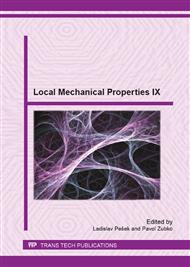p.234
p.237
p.241
p.245
p.249
p.253
p.257
p.261
p.265
Local Changes of Microhardness in Dissimilar Weld Joints after High Temperature Exposure
Abstract:
The paper presents results obtained during evaluation of dissimilar weld joints of creep-resistant steels. During high temperature exposure of dissimilar weld joints, alloying elements were redistributed across the weld interface. These diffusion effects can cause local changes of microstructure and have a direct effect on local mechanical properties in weld interface area. Carbon and nitrogen have the strongest influence on changes of mechanical properties of steels. . These local changes of mechanical properties have a strong influence on the reliability and the service live of the whole welded structures. The dissimilar joints of the austenitic steel/martenzitic steel type was studied. Laboratory weld joints were prepared and annealed at different temperatures for different time periods. Microhardness profiles across the weld interface were measured and the influence of long-term, high temperature exposure on the changes of local microhardness was evaluated. Results were compared with pseudo-binary phase diagrams and with the literature.
Info:
Periodical:
Pages:
249-252
Citation:
Online since:
September 2013
Authors:
Keywords:
Price:
Сopyright:
© 2014 Trans Tech Publications Ltd. All Rights Reserved
Share:
Citation:


